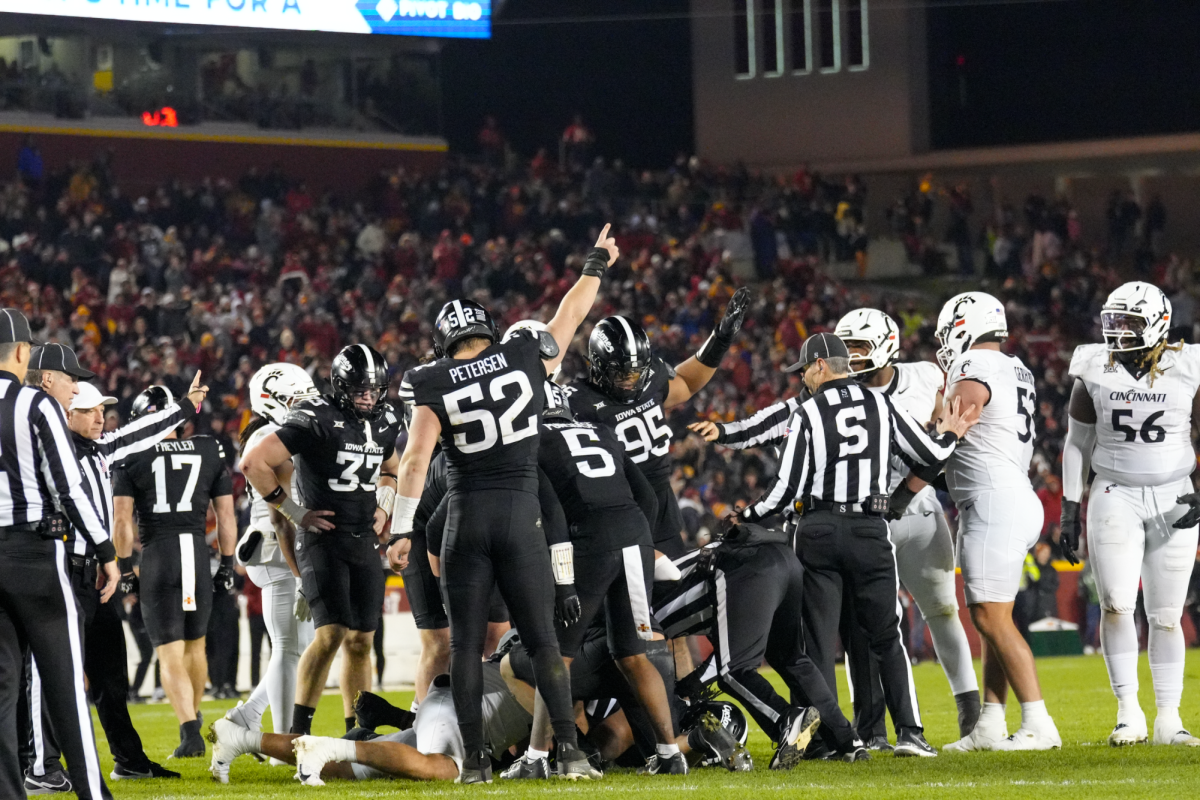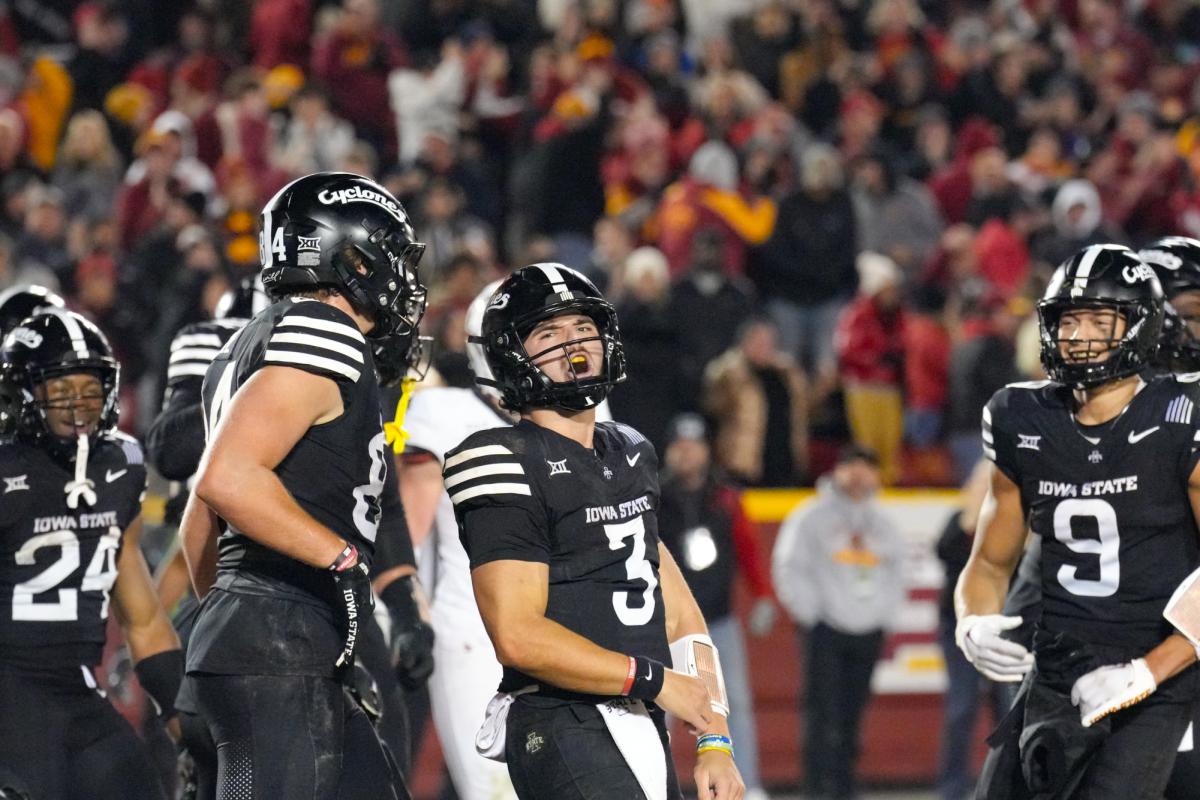40 years of 007
November 21, 2002
The lines are classic. “Vodka martini — shaken, not stirred.” “Bond — James Bond.”
The girls are horrifically named sexist stereotypes: Agent XXX, Mary Goodnight, Dr. Holly Goodhead, Honey Ryder, and, of course, Pussy Galore.
The cars are na‹ve phallic symbols, augmented with missiles, spikes, ejector seats — everything a man in constant fear of his masculinity needs.
There are so many things about the James Bond series that could be reduced to mediocrity, yet the films live on, getting sillier, indeed, but also more important historically with each passing decade. Well after the death of Bond’s creator, Ian Fleming, his incarnation keeps stacking up huge grosses at the box office.
On Friday, the 20th Bond film, “Die Another Day” will be released, featuring the fifth man to play James Bond, Pierce Brosnan, and the second Academy Award—winning co-star, Halle Berry. For the rank amateurs keeping score at home, the other four Bonds: Sean Connery, George Lazenby, Roger Moore and Timothy Dalton, and for the trivia buffs, Christopher Walken is the only other Oscar-winning co-star Bond has seen in 40 years.
With the popular Brosnan returning for his fourth adventure and the big-name co-star in Berry, the film is expected to be a smashing success.
The only question seems to be “Why?” as the international climate that gave rise to the secret agent mythos has dissipated and the entire world seems to have changed. What kind of appeal does such an antiquated phenomenon have?
“I like the interesting high-tech gadgets they use, and the music’s good too. I don’t watch just because of the women, but they’re a bonus,” says Mike Rach, senior in mechanical engineering.
There is a tremendous amount of predictability from film to film, perhaps explaining the ability of producers to switch Connery for Lazenby or Moore for Dalton.
“It’s just something you know going in. It’s going to be about the gizmos. He always wins. He always gets the ladies,” says Hope Metheny, senior in biology. of
The stability in character comes partly from its original incarnations in early films that has lingered more than a 40-year span.
“The character is stripped down to definable characteristics so that we always hear about martinis — ‘shaken, not stirred’ and ‘Bond, James Bond.’ We’re always comforted by the familiarity,” says Charles Silet, professor of English.
The origins of James Bond spring from a turbulent society adapting to ideas like the Cold War.
“The Bond stories began in the late 1940s, and there was a need to re-establish male supremacy after [World War II] after a fear of emasculation by socio-cultural ‘threats’ like the civil rights movement and the women’s movement had de-centered male hegemony,” Silet says.
The use of such an overtly masculine character who wholly dominates women while always emerging as a hero is a primary theme in 007’s adventures. Nonetheless, there’s more to the success.
“Bond returns that appeal [of male dominance]. It’s also part of a genre — the action film — that we’re fascinated by even today,” Silet says.
While some Bonds focus primarily on action, the line of genres is blurred by the Bond franchise.
“The series always worked the line between seriousness and some kind of humor,” says Lee Poague, professor of English.
Its ability to transcend the Cold War comes first and foremost from the diverse set of stories created by Fleming.
“Even in the original novels, the evil people weren’t always involved with SMERSH or some Soviet organization, there were always rogue criminals. There was always a clear mentality of ‘them’ and ‘us,’ but there were always lots of ‘evil others’ out there that we can focus on,” Silet says.
More peculiar still is the worldwide popularity of a character that represents the pinnacle of Britishness. Poague suggests the importance might be English nationality as the key.
“I am deeply tempted to say [the international appeal] is because England is no longer a colonial power. You couldn’t do it with an American,” Poague says.
“The obvious point of comparison would be the Tom Clancy novels. Think of the difference in tone between an American secret agent and Bond. Bond is fun. The other ‘Americans’ would be guys like Schwarzenegger and Stallone,” Poague says.
In the films, Bond is always on the brink of death, only to find escape. Meanwhile, the Bond series continues to go strong after 40 years and is almost unparalleled.
“There are characters in fiction and film, most notably Sherlock Holmes and Dr. Watson, that have been in a number of films: Tarzan, characters like Charlie Chan that were quite durable, or Agatha Christie’s Hercules Poirot. The Holmes series has had a longer life, but on the level of the box office, the Bond series has outstripped everything else,” Silet says.
The success of Bond has not been limited to films, as companies have fought to get their products conspicuously “placed” in their films, including a long list of classic “Bond cars.” Among the current collectibles listed on www.007.com include 007 walkie-talkies, a large set of die-cast cars and the absolute proof of pop culture inundation — James Bond and Bond girl Ken and Barbie dolls.
As for the next film, who’s to say what will be on screen? Those who have seen the other films would have an edge, Silet says.
“The Bond film has become such a staple of filmmaking that already you’ve sort of seen each one before it comes out, because you’ve already seen the others. The new movie is probably not going to have any surprises. James Bond will survive, end up with an attractive woman, be menaced by the baddies and especially because of computer enhancements, the special effects will have lots of explosions,” Silet says.
Formulaic? Certainly.
Offensive? Possibly.
Classic? Definitely. The Bond franchise seems to be the only thing more invincible than Bond himself. Though the films can be slandered, insulted and impugned as blocking the path of true cultural development, the films remain popular enough that their detractors will have to merely hope that they too will die another day.






